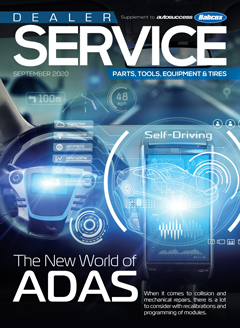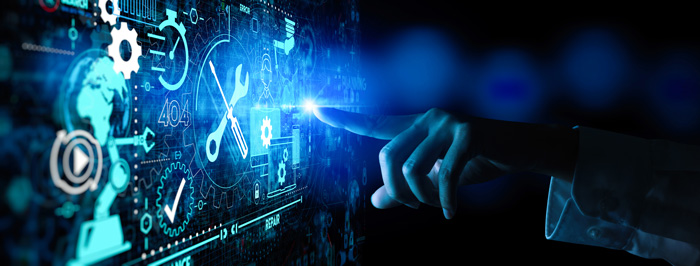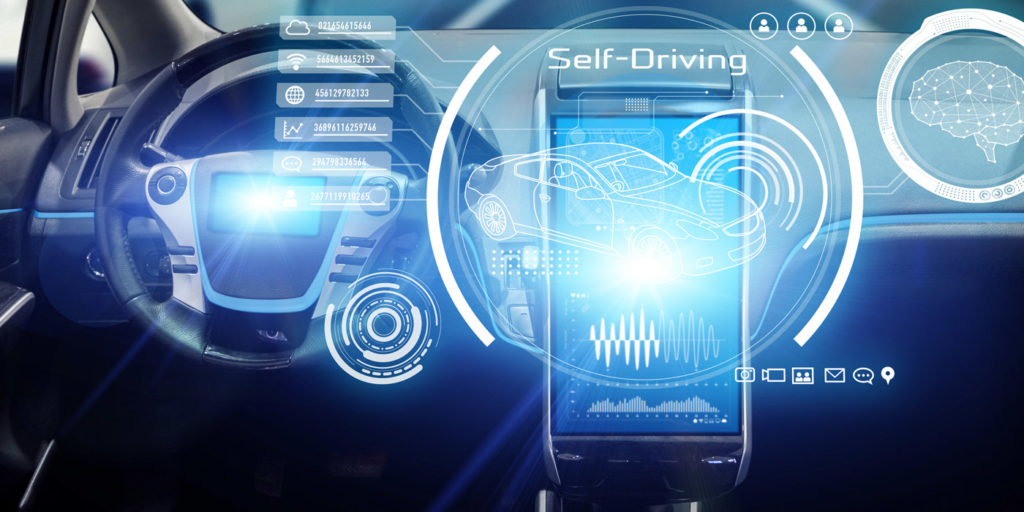When it comes to collision and mechanical repairs, there is a lot to consider with recalibrations and programming of modules.
We’ve all learned that researching the procedures needed to repair vehicles today takes time. We’re also still learning what is actually involved in any repair procedure, and that procedures may vary, not only from automaker to automaker but year and model of vehicle.
We can no longer take anything in repair processes for granted. In this constantly changing world, it has been hard for the repair industry to accept the critical value of a pre- and post-repair scan to a vehicle’s repair process. It has been even harder to accept recalibrations and programming of modules. The vehicle has turned into one big computer with a variety of sensors that literally see the vehicle’s surroundings. This has changed how we look at any repair procedure dramatically.

Scan tools, targets, validated space in the shop, test drives, drive cycles, programming, RDO codes… the list of new terms and definitions of what is needed to correctly repair a vehicle goes on and on. Failure to research and complete all procedures brings the level of liability up. It’s a daunting process to accomplish but not impossible.
With all the time, training and required equipment to repair a vehicle, and how much it changes for each vehicle manufacturer, many are questioning the business model of today. Is volume of vehicles more sustainable versus establishing what is needed per vehicle? Can a shop afford to not charge for things they have not in the past? The recent pandemic has many shops re-evaluating their business and every facet of how they sustain that business. Research time for repairs, time to transport vehicles to sublet companies and time to do a proper test drive are just some considerations everyone needs to evaluate. And keep in mind that many are still trying to figure out how to correctly do many procedures; there seems to be a lot of assuming going on. Also, there have been many bad interpretations of procedures. This may not be new to us, but the game has changed.
Change
If you’re reading this article, chances are you like reading about change and try to keep up with that change in this roller coaster of an industry. You’re probably also looking for things that maybe you didn’t think of.
I do not know everything there is to know. The changes are coming so fast and furious that I frequently tell people, “I know less today than I did yesterday.” There are so many variables between vehicles that no one person knows it all. With today’s new vehicles, we’ve learned so much — but there is so much more to learn and way more to come.
Pre-Repair Scan
If you’ve kept up with and are following vehicle manufacturer guidelines, you know a pre-repair scan is needed prior to starting work. Old-school guys would ask, “Why? We’re just fixing the rear bumper.” The problem with that line of thinking is that there are so many systems tied together or in line with each other.
We see electronic components in the rear of the vehicle using or tied into the wire harness or components in front. If a condition exists with a system that may not be collision-related, will you have to wait until that issue is addressed before you can complete the repair? That is the value of pre-repair scans — they blueprint where you may have other issues. Now, you need to research if any DTCs from the pre-repair scan will affect your task of repairing that vehicle to pre-loss condition.
The Repair Process
The pre-repair scan is for conditions that occur from or prior to the crash. We also have to look at conditions that will arise from the repair process. What will be moved, adjusted or disconnected? What will be replaced? Just because you did not replace it or unplug it does not mean you do not have procedures to perform to validate that the component does its job correctly.
We know that, if we replace a quarter panel, the blind spot and parking assist systems may require recalibrations or even programming. There are many mechanical procedures that will require procedures too. Unless you research the repair procedures, you may not realize what is required. This has caused some concern and confusion for the service department, as well as the collision center.
For example, a vehicle comes into a service department for a simple alignment. One of the adjustments during the alignment was toe on the vehicle. In the past, everything would be good and the cost to do an alignment would be paid by the customer. On new vehicles equipped with ADAS, that alignment may also require a recalibration of the camera mounted on the windshield and possibly radar for crash avoidance. The toe adjustment may have changed the ride height and angle of the vehicle, which could compromise the ADAS function. Now, picture in your head the change in cost of that alignment.

“Scan tools, targets, validated space in the shop, test drives, drive cycles, programming, RDO codes… the list of new terms and definitions of what is needed to correctly repair a vehicle goes on and on.”
Mechanical Repairs
Structural repairs and movement of sensors will require more electronic procedures than ever. Collision centers also need to be aware of the mechanical repairs. What happens when a front strut is replaced? What about dropping an engine cradle? What more could be required that we did not consider in repairs we did in the past? A simple battery disconnect could require three different procedures to reset electronic components. Actually, consider anything that requires a change in a vehicle’s ride and/or disconnect of any wire connections in a wiring harness.
Mechanical considerations you need to be aware of include:
• Any alignment or repair that changes thrust angle
• Any alignment or repair that changes ride height
• Windshield replacement and glass choice
• Brake service and parts choice (including ABS and
stability control)
• Custom wheel and tire work.
If the service department is performing the alignment, who is responsible for doing a recalibration? You may assume they did the recalibration. If you’re setting up recalibrations, which ones? In reality, did anyone know recalibrations were required? How many times do you think these procedures are missed?
Timing
Now, let’s think about the timing of the procedures. The vehicle is out of the booth being reassembled. The glass guy comes out and replaces the windshield. He has the capability, and you have a space that has been vetted as a place where a forward camera recalibration can be done. Both glass and recalibration are complete. You send the vehicle to the service department and it comes back ready to go, right? Now, you look at the paperwork and see that adjustments were made. Now, the camera recalibration will need to be done again, as the targets were set to the alignment prior to the service department changing them. Knowing what needs to be done and how each process affects the other will save you time, money and frustration.
Learning how modifications vehicle owners make to wheels and tires as well as lift kits, custom exhaust and vehicle security systems affect any or all repair procedures will also come into play when researching the repairs. There is a lot to consider that many do not realize in the new world of ADAS.
Research
If you read this article, you saw the term “research” over and over. This means accessing repair information and getting instructions. Then, the tech as well as the shop needs to follow those instructions. This research will take time. Many hours and resources as well as costs will add up. But it is a necessary component to doing business in any facet of auto repair, whether it be mechanical or body repair. Things to consider in this process are: what research to look for, how to do the research and the value of your or your employees’ time.














